How To Choose Snowboard Bindings
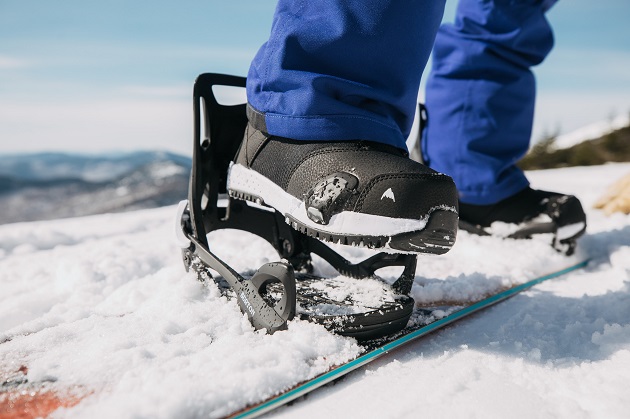
Source: pathfinderwv.com
With snow picking up in the Snowies, now is the time to forget the beach and head to the mountains, or take the short plane ride across the ditch to our Kiwi neighbours, and try some winter sports. Getting into skiing or snowboarding might seem daunting to someone who hasn’t seen or felt snow under their feet, but it’s an experience worth trying, and something you’ll be longing to go back to as soon as you hear the word ‘snow’.
But as is with all sports, you’ll need the right gear to make the most out of your trip. Skiing and snowboarding share some common equipment; besides clothing and protective gear, and um…skis and snowboards, you’ll need ski and snowboard bindings. These are the things that tie your boots to the skis or the snowboard. For these two similar sports, bindings are totally different. Not only by the way they look, but also by the types, and how they fit on the skis or the snowboard. Here, I’ll be guiding you through the different types of snowboard bindings and help you choose which is the right fit for you.
Types of Snowboard Bindings
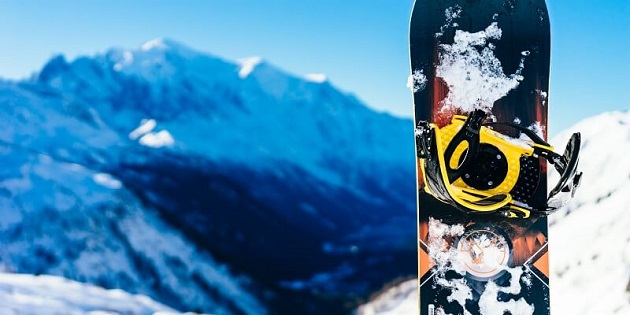
Source: snowboardhow.com
The simplest way to tell snowboard bindings apart is how your boots are fitted into them. You’ll hear of two basic types: Strap-in bindings, and Speed entry bindings.
Strap-in bindings are more common and the first type you’ll come across. They consist of adjustable straps that tighten the boots around the ankles and toes to the fit you’re comfortable with. They’ll be easier to strap on sitting down than from a standing position. The back of your boots pushes on the high-back, which is fixed.
Speed entry bindings combine the ankle and toes straps in one continuous part, but this has two adjustment points to get you comfy. They won’t get loose, so they won’t need frequent adjustment like strap-in bindings. The back of speed entry bindings is unlocked to fit in the boot, and locked in position when you’re done. This is quicker and easier to do standing up, like coming straight off the ski lift, though it needs some practice.
Depending on your snowboarding experience, a newbie will go for beginner bindings, while a seasoned snowboarder can choose between several types depending on their riding style. Beginner bindings tend to be softer, in terms of how much they flex. Flex is measured as a whole number out of ten. The lower the number, the more forgiving the binding. They’ll be easier to strap and have some level of shock absorption if you get to do jumps. And the upside is, they’re typically cheaper.
Experienced snowboarders will go for freestyle, all-mountain or freeride bindings that’ll also suit different boards. If you like doing tricks in the parks or halfpipe, a freestyle binding won’t be too stiff, with a 5/10 flex giving you the right amount of balance between control and maneuverability. They’ll have high shock absorption, something for which your feet will be grateful. Freeride bindings are designed for downhill speed, so tend to have less flex for better response. For maximum control, they’ll also need the right amount of adjustability in terms of how they fit. They’ll be the more expensive bindings sold because of the stiffer materials and the work that goes into their design. All-mountain bindings are something in between these two types and serve as all-purpose binding with medium-to-high flex and decent shock absorption.
Compatibility with Snowboards
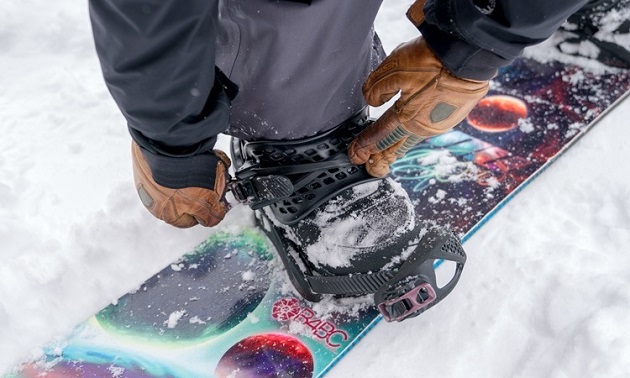
Source: onthemountaingear.com
Bindings need to be compatible with your snowboard. There are different mounting systems on snowboards, the most common today being the 2×4 system with two sets of four screws securing the binding to the board. Holes on the board are spaced at 2cm apart, and there are usually 2 sets of 6 holes per row to get the stance you want. Channel systems fit bindings along a track or ‘channel’ insert and then screwed in place to the desired width. Famous snowboard brand Burton came up with the channels system, which is also being adopted by other brands. Most bindings are compatible with either system, with a universal disk fitting most board types. You can also buy separate disks to fit different systems.
Size and Fit
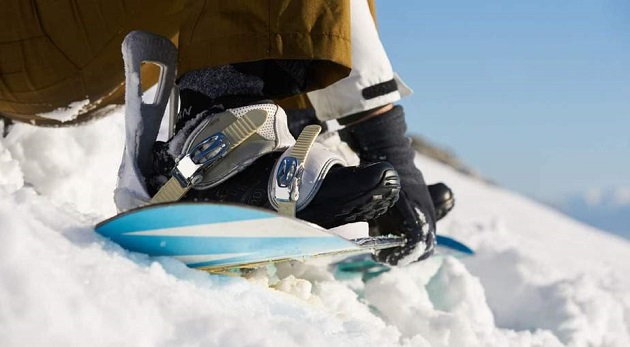
Source: ravereviews.org
Bindings need to be the right size for your boots, and the right size for your board. There aren’t standardised sizes, and the same size of one brand won’t necessarily mean the same size in another. Men snowboard bindings are usually sold in Small (S/M), Medium(M/L), Large(L/XL) and Extra-Large (XL) sizes. Women’s bindings are sold in Extra-Small (XS), Small (S/M), Medium (M/L) and Large (L). The best way to find out whether the binding will fit is to try them on with boots. Since different brands vary in sizing, the right binding will be the one that offers enough flex without giving too much leeway. Bindings also need to fit the width of the board. Bindings that are too big will dig into the snow, while those that are too small will be less responsive, making it harder to change course.
Buying Snowboard Bindings
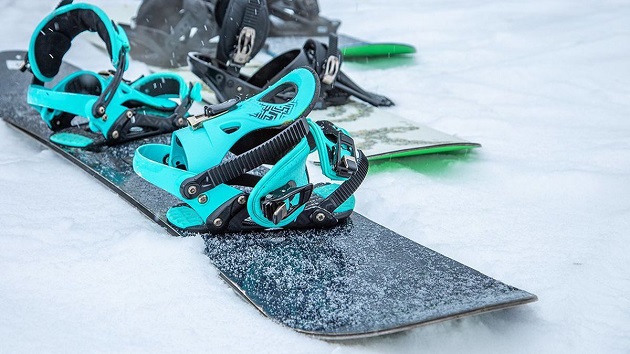
Source: chicagotribune.com
Snowboards, boots, bindings, thermal clothing and protective gear can be found online. If you know what you need from a trusted brand, then online purchases are quick and easy. For bindings and boots, it might be a good idea to go in-store and try them on in person to get the right fit, especially if you’re just getting into snowboarding and buying your first pair.